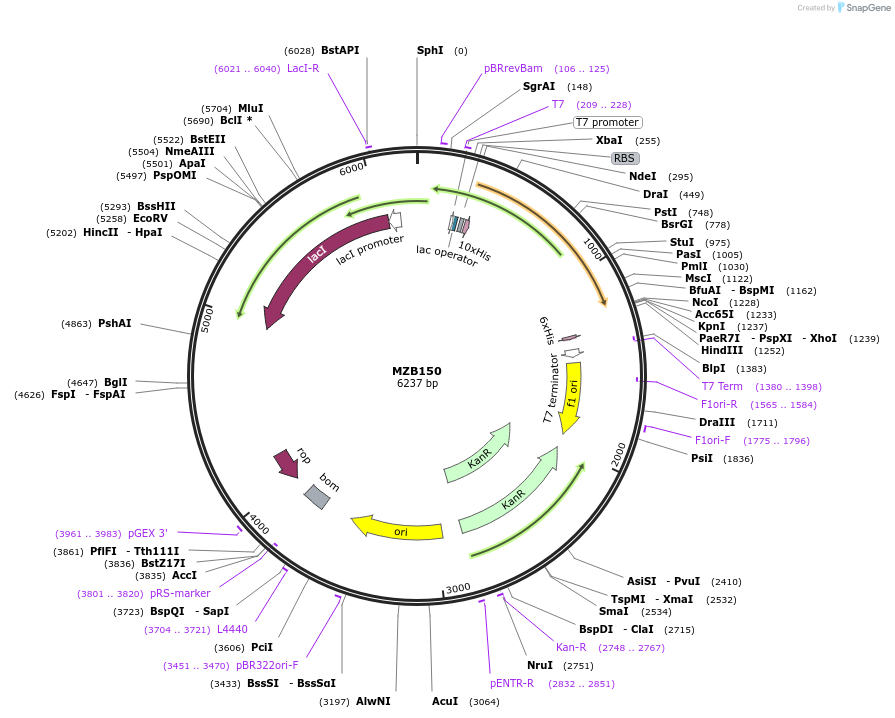MZB150
(Plasmid
#217840)
-
PurposeBacterial expression of 10xHis-SUMO (Smt3) fusion to Sec7 domain (52-252) of Cytohesin-2 (CYTH2/ARNO) for rapid nucleotide exchange and activation of Arf GTPases
-
Depositing Lab
-
Sequence Information
Ordering
| Item | Catalog # | Description | Quantity | Price (USD) | |
|---|---|---|---|---|---|
| Plasmid | 217840 | Standard format: Plasmid sent in bacteria as agar stab | 1 | $89 | |
Backbone
-
Vector backbonepET-29b(+)
-
Backbone manufacturerNovagen
-
Vector typeBacterial Expression
Growth in Bacteria
-
Bacterial Resistance(s)Kanamycin, 50 μg/mL
-
Growth Temperature37°C
-
Growth Strain(s)DH5alpha
-
Copy numberLow Copy
Gene/Insert
-
Gene/Insert nameARNO
-
Alt nameCytohesin-2
-
Alt nameCYTH2
-
SpeciesH. sapiens (human)
-
MutationDeleted residues 1-51 and 253-400
-
Entrez GeneCYTH2 (a.k.a. ARNO, CTS18, CTS18.1, PSCD2, PSCD2L, SEC7L, Sec7p-L, Sec7p-like, cytohesin-2)
-
Tags
/ Fusion Proteins
- 10x His (N terminal on insert)
- SUMO (SMT3) (N terminal on insert)
Cloning Information
- Cloning method Gibson Cloning
- 5′ sequencing primer T7 Promoter
- 3′ sequencing primer T7 Terminator
- (Common Sequencing Primers)
Resource Information
-
Supplemental Documents
-
A portion of this plasmid was derived from a plasmid made byJames Hurley, PhD- Department of Molecular & Cell Biology University of California, Berkeley
Terms and Licenses
-
Academic/Nonprofit Terms
-
Industry Terms
- Not Available to Industry
Trademarks:
- Zeocin® is an InvivoGen trademark.
These plasmids were created by your colleagues. Please acknowledge the Principal Investigator, cite the article in which the plasmids were described, and include Addgene in the Materials and Methods of your future publications.
-
For your Materials & Methods section:
MZB150 was a gift from Richard Baker (Addgene plasmid # 217840 ; http://n2t.net/addgene:217840 ; RRID:Addgene_217840) -
For your References section:
A structure-based mechanism for initiation of AP-3 coated vesicle formation. Begley M, Aragon M, Baker RW. Proc Natl Acad Sci U S A. 2024 Dec 24;121(52):e2411974121. doi: 10.1073/pnas.2411974121. Epub 2024 Dec 20. 10.1073/pnas.2411974121 PubMed 39705307



